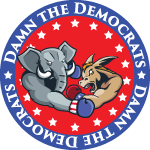Supreme Court Justices Neil Gorsuch and Sonia Sotomayor are once again at odds over a major case concerning the First Amendment.
In a landmark 6-3 decision that pitted the interests of LGBTQ non-discrimination against First Amendment freedom, the Supreme Court on Friday held that a Colorado graphic designer who wants to make wedding websites does not have to create them for same-sex marriages.
The nation’s highest court ruled in favor of artist Lorie Smith, who sued the state of Colorado over its anti-discrimination law that prohibited businesses providing sales or other accommodations to the public from denying service based on a customer’s sexual orientation.
“In this case, Colorado seeks to force an individual to speak in ways that align with its views but defy her conscience about a matter of major significance,” Justice Neil Gorsuch wrote in the court’s majority opinion. “But tolerance, not coercion, is our Nation’s answer. The First Amendment envisions the United States as a rich and complex place where all persons are free to think and speak as they wish, not as the government demands. Because Colorado seeks to deny that promise, the judgment is reversed.”
Smith has maintained throughout the case that she has no problem working with the LGBTQ community, just not for gay weddings.
Sotomayor dissented from the majority, along with Justices Elena Kagan and Ketanji Brown Jackson, calling the ruling “a new license to discriminate” and arguing that the “symbolic effect of the decision is to mark gays and lesbians for second-class status.”
The dissenting opinion argued that there “can be no social castes” in a free and democratic society, suggesting that the majority’s decision would create such a reality.
Sotomayor, who was appointed by former President Barack Obama, went on to falsely claim that the 2016 mass shooting at Pulse, a gay nightclub in Orlando, Florida, had been motivated by anti-gay prejudice. Court and phone records that emerged following the massacre revealed that anti-LGBTQ hatred had no apparent role in the gunman’s motivations.
Still, Sotomayor went on to mention various examples of anti-LGTBQ discrimination and violence in her opinion, seemingly arguing that the Supreme Court’s decision on Friday will create more hostility toward the LGBTQ community and lead to more hate crimes.
Gorsuch, who was appointed by former President Donald Trump, lambasted Sotomayor’s dissent, saying it “reimagines the facts” from “top to bottom” and fails to answer the fundamental question: “Can a State force someone who provides her own expressive services to abandon her conscience and speak its preferred message instead?”
Gorsuch went on to say that the dissent “gets so turned around about the facts that it opens fire on its own position,” adding that it is “difficult to read the dissent and conclude we are looking at the same case.”
Friday wasn’t the first time that Gorsuch and Sotomayor had something of a war of words over a First Amendment decision. Last year, the Supreme Court ruled that a public school district couldn’t stop a football coach from praying on the 50-yard line after games.
In Kennedy v. Bremerton School District, the Supreme Court held that preventing someone from engaging in such prayer as a personal religious observance violated the First Amendment’s protections of free speech and the free exercise of religion.
Sotomayor took issue with Gorsuch’s portrayal of the facts in the majority opinion, even taking the unusual step of including photos in her dissenting opinion that, in her view, undercut his summary of the case. She also seemed to accuse him of using misleading information.
HIGH SCHOOL FOOTBALL COACH SCORES BIG WIN AT SUPREME COURT OVER POST-GAME PRAYER
“To the degree the court portrays petitioner Joseph Kennedy’s prayers as private and quiet, it misconstrues the facts,” wrote Sotomayor. “The record reveals that Kennedy had a longstanding practice of conducting demonstrative prayers on the 50-yard line of the football field. Kennedy consistently invited others to join his prayers and for years led student athletes in prayer at the same time and location. The court ignores this history. The court also ignores the severe disruption to school events caused by Kennedy’s conduct.”
Gorsuch began his opinion by stating that Kennedy had lost his job as a high school football coach “because he knelt at midfield after games to offer a quiet prayer of thanks.” The opinion argued that Kennedy had prayed “during a period when school employees were free to speak with a friend, call for a reservation at a restaurant, check email, or attend to other personal matters. He offered his prayers quietly while his students were otherwise occupied. Still, the Bremerton School District disciplined him anyway.”
Gorsuch argued that the evidence showed that Kennedy had demonstrated that “his speech was private speech, not government speech.”
The two justices sparred in their dueling opinions over whether students had felt pressured to participate in the prayers.
That dispute followed the emergence of reports from early last year claiming that Gorsuch’s refusal to wear a face mask at Supreme Court arguments due to COVID had created tensions between him and Sotomayor. However, both justices released an unusual joint statement last January rebutting such claims.
“Reporting that Justice Sotomayor asked Justice Gorsuch to wear a mask surprised us,” the statement said. “It is false. While we may sometimes disagree about the law, we are warm colleagues and friends.”
